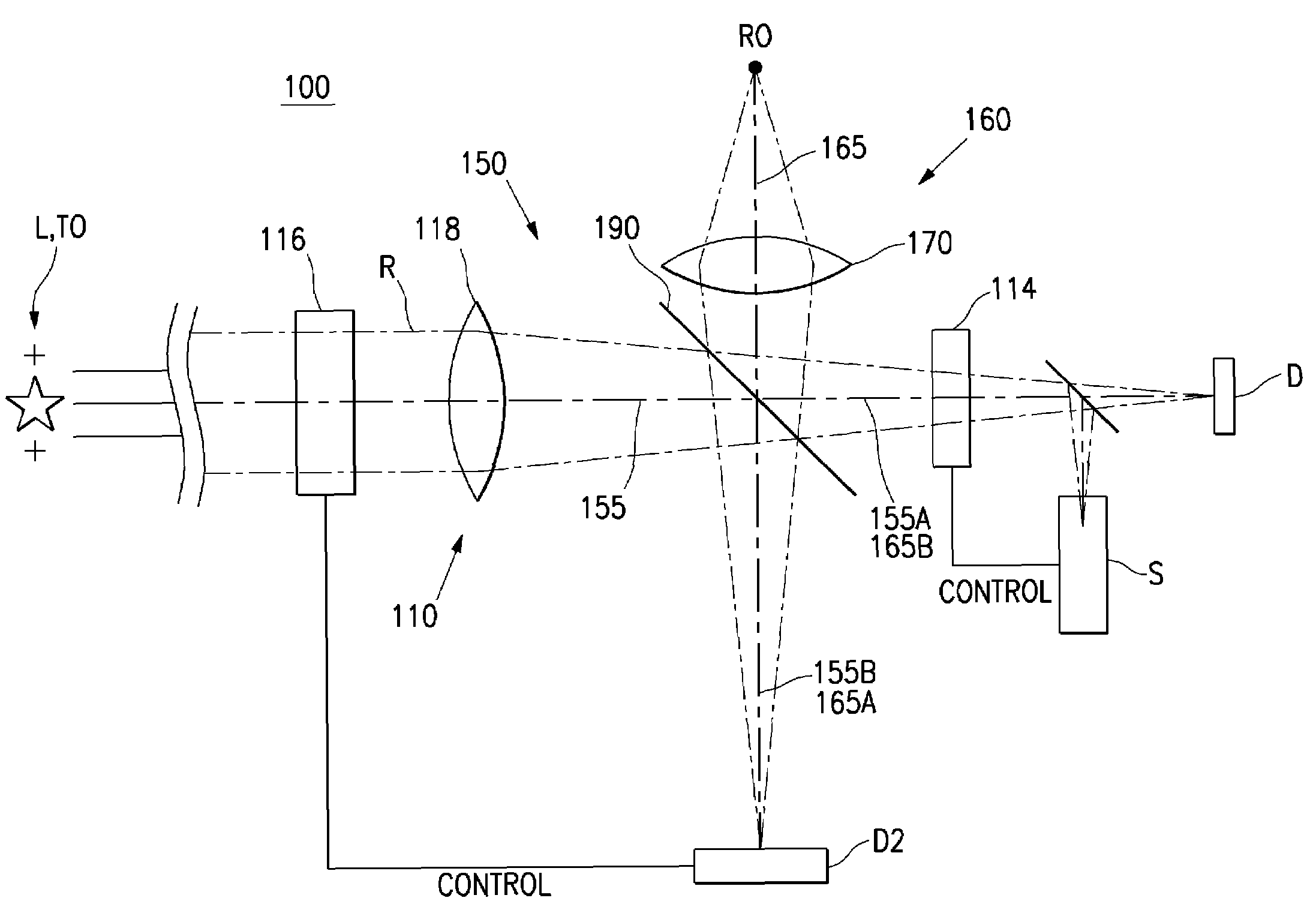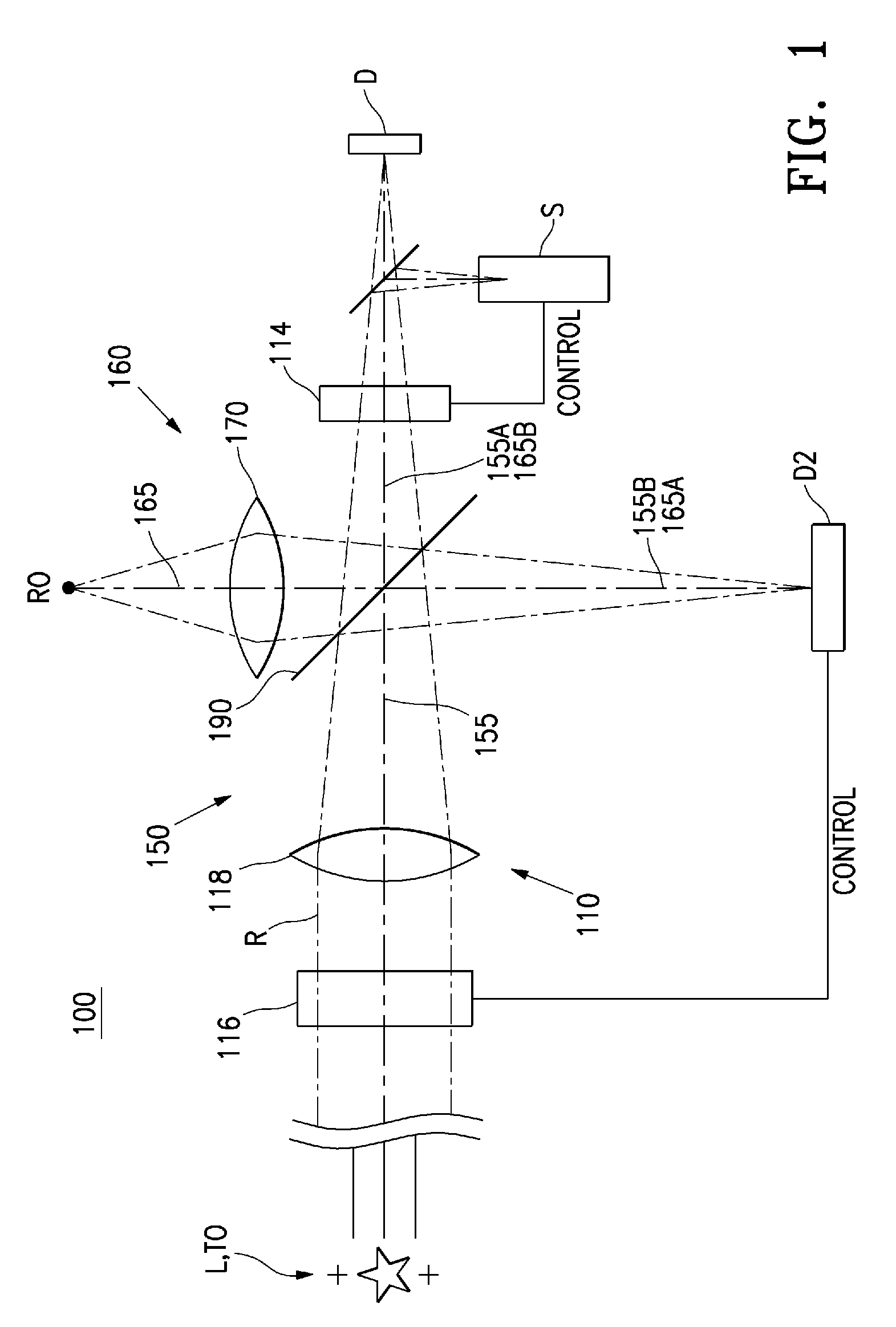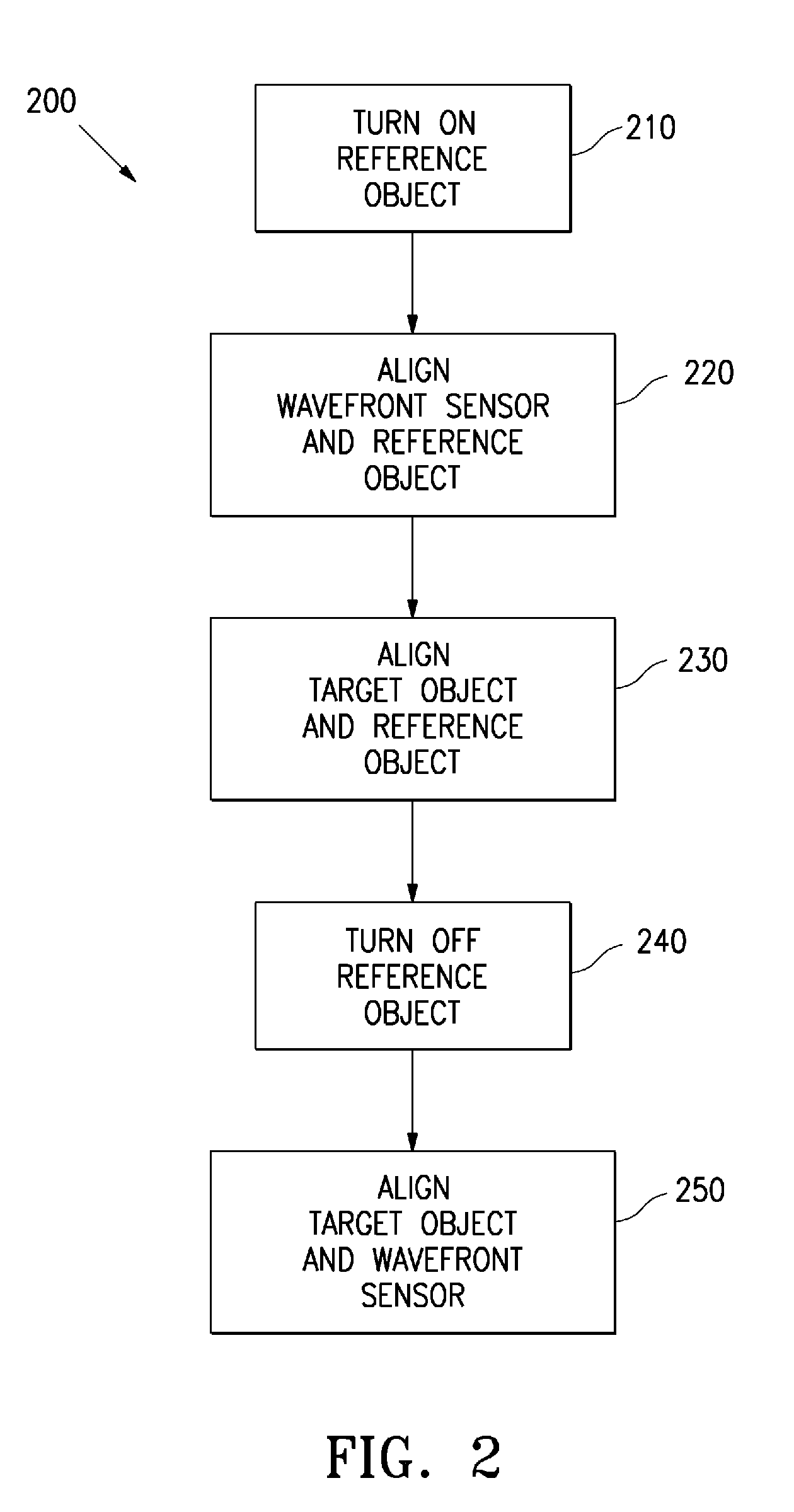Adaptive optics imaging system with object acquisition capability
an optical imaging system and adaptive optic technology, applied in the field of adaptive optics systems, can solve the problems of creating aberrations that are constantly changing, increasing data transmission needs, and increasing the cost and difficulty of fiber optic infrastructure additions,
- Summary
- Abstract
- Description
- Claims
- Application Information
AI Technical Summary
Benefits of technology
Problems solved by technology
Method used
Image
Examples
Embodiment Construction
[0020]FIG. 1 is an illustration of an adaptive optics imaging system 100 according to the present invention. The system 100 includes a primary imaging subsystem 150 and an acquisition imaging subsystem 160, which are located in fixed positions relative to each other. The system 100 also include a beamsplitter 190 that combines the two imaging subsystems 150 and 160, as will be further described below.
[0021]The primary imaging subsystem 150 includes a telescope 110 (represented by lens 118 in FIG. 1), a variable phase device 114 and a wavefront sensor S. The telescope 110 has an optical axis 155. The variable phase device 114 and wavefront sensor S are located on the optical axis 155, with the wavefront sensor S downstream of the variable phase device 114. The primary imaging subsystem 150 typically also includes a detector D. In this example, a beamsplitter 126 splits the optical axis between the detector D and wavefront sensor S. The primary imaging subsystem 150 also includes a be...
PUM
 Login to View More
Login to View More Abstract
Description
Claims
Application Information
 Login to View More
Login to View More - R&D
- Intellectual Property
- Life Sciences
- Materials
- Tech Scout
- Unparalleled Data Quality
- Higher Quality Content
- 60% Fewer Hallucinations
Browse by: Latest US Patents, China's latest patents, Technical Efficacy Thesaurus, Application Domain, Technology Topic, Popular Technical Reports.
© 2025 PatSnap. All rights reserved.Legal|Privacy policy|Modern Slavery Act Transparency Statement|Sitemap|About US| Contact US: help@patsnap.com



